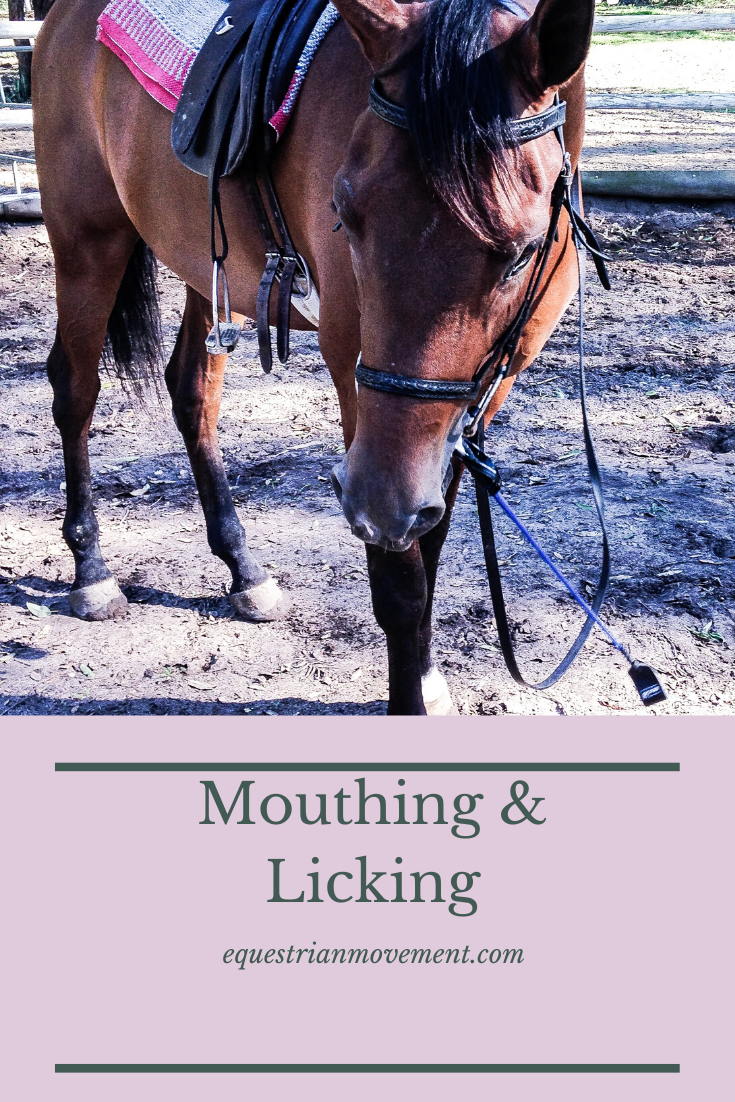My 2 cents on licking and mouthing
Does your horse have to have something in it’s mouth? Or is it a licker?
Licking and mouthing are considered signs of relaxation and are often touted as gold standards signs of submission.
For me though, if a horse has to show active, loud signs of relaxation than it had to be stressed in the first place.
Everything we do with our horse creates stress.
The stress of learning cues and aids;
The stress of behaving themselves and looking after us no matter the scenario and environment;
The physical stress of performing for us all have an impact on our horses.
It is just a matter of ensuring that the stress is just enough to fire the adaptational process towards improving the horse and not a detriment to them.
For example, more physical stress than they can cope with results in injury and worst case, breaking down young. The same kind of break down can happen with mental and emotional stress, both of which are closely related. Just enough stress promotes resilience and courage. Too much stress leads to overwhelm and shut down. Finding that level of pressure that promotes the transformation your looking for without the stress. Which means that sometimes our horse works well without need to show active signs of relaxation.
Raising your horse’s energy and bringing it back down
When we are training our horse and establishing cues, we are applying pressure to our horses to trigger a reaction. The training process is multiple applications of this pressure to trigger a reaction until our horse is conditioned to associate a particular behaviour with a cue.
The trouble with this process is that our horses can get stressed, overwhelmed and frustrated. Their energy raises and their emotions get heightened until they can no longer control their behaviour and start to act out.
Each ask compounds on the previous ask and the emotional and mental performance pressure builds up. Some horses cope, some horses don’t. The ones that don’t get labelled dangerous, difficult or naughty but at the crux of it they just haven’t been shown how to cooperate and say yes.
One training tool or value we have to manage this is asking for consent. We give our horses the time and space to process the ask to say no if they need to but more importantly say yes when they are ready for the next ask. This allows them to process their emotions and stress before it gets to the point of overwhelm.
A horse that can’t control its emotions, can’t control its behaviour.
The second tool or value we use is teaching our horses relaxation and looking for relaxation and tension cues. When we are tuned in to our horses level of relaxation and tension we can clearly know if our horse is going to cope with pressure, how much pressure and what they will do when they stop coping.
This sliding scale of relaxation and performance is key to keeping our horses in a relaxed, active working brain. The more often you transition from active working to relaxed back to active working. The stronger that wiring becomes the smoother the transition is and the more resilience we build for them to cope with increased levels of pressure and stress.


